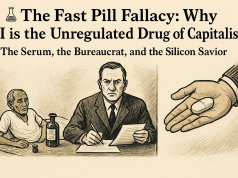In recent years, the corporate world has witnessed a seismic shift toward embracing diversity and inclusion as key components of business success. Companies boast about their diverse hiring practices and the creation of inclusive environments in glossy brochures and on sleek websites. But beneath the veneer of inclusive rhetoric, does the daily workplace reality match the advertised image? This is the critical question companies must confront to ensure that they are not just constructing an illusion of inclusion, but genuinely cultivating a culture where every employee feels valued and heard.
The journey toward cultivating an authentically inclusive workplace begins with a genuine assessment of the organization’s culture. It is not enough to simply hire a diversified workforce; inclusion must be woven into the very fabric of the company’s ethos. It means examining whether the voices of underrepresented groups are amplified or silenced, whether opportunities for advancement are equitably accessible, and whether the work environment truly welcomes the uniqueness of each individual.
A common pitfall for many organizations is to equate the presence of diverse individuals with an inclusive culture. However, if those individuals do not feel empowered and supported, diversity alone can be an empty metric. The retention of diverse talent, their satisfaction, and their progression within the company are real indicators of an inclusive culture.
Moreover, inclusivity should not be seen as a static achievement but as a dynamic process. It requires continuous learning and adaptation. In this light, feedback mechanisms become essential. Regular surveys, focus groups, and open conversations can offer insights into the lived experiences of employees. It’s critical that leaders not only listen to this feedback but also act on it, demonstrating a commitment to continuous improvement.
An authentic culture of inclusion is often visible to those both within and outside the organization. It is reflected in the day-to-day interactions, the decision-making processes, the company policies, and the unspoken norms that define ‘how we do things here.’ Assessing the authenticity of workplace culture therefore demands looking at the multidimensional aspects of how an organization operates.
To assist organizations in evaluating their inclusivity, the following framework can be employed:
1. Representation: Does the workforce reflect the diversity of the community it operates in, across all levels of the organization?
2. Respect: Are all employees treated with respect and dignity in every interaction?
3. Equity: Are resources, opportunities, and support made available fairly to all employees?
4. Development: Are employees given the chance to grow and develop, with clear pathways for advancement?
5. Integration: Are diverse perspectives actively sought out and integrated into the decision-making processes?
Once the assessment is complete, the path to fostering an authentically inclusive culture involves action – targeted initiatives, transparent policies, and accountable leadership. Companies must also be willing to challenge their own norms and practices, asking whether they truly serve the goal of inclusion or merely uphold the status quo.
In the spirit of inclusivity, this dialogue is open to all. Companies that are serious about diversity and inclusion must embrace the complexity of these issues and engage in the nuanced conversations that can lead to real change. Only then can they break the illusion and emerge with a workplace culture that is as authentically inclusive as the diverse tapestry of society itself.
In conclusion, it’s time for organizations to peel back the layers of their own corporate narratives and take a hard look at their workplace culture. Are they living up to their lofty declarations of inclusivity, or is it all just an elaborate illusion? The integrity and future success of their business may well depend on the answer to that question.




























